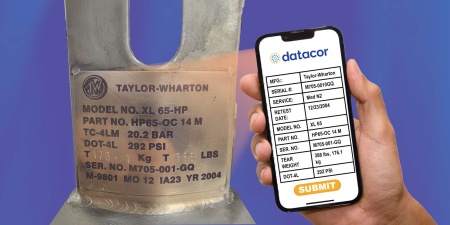For just about every distributor-based association whose members I’ve worked for or for whom I’ve written an article, the story is the same. It’s commonly believed that members are far behind the times when it comes to digital marketing.
To some extent this is true, but in most cases that’s not the case. Here’s what I usually find:
- The majority of members don’t know where to begin from a digital marketing standpoint.
- Some members understand digital marketing is important, but can’t seem to execute the program they know will produce results. These folks never seem to allocate enough budget to get the job done. They usually underinvest in a proof of concept program only to be disappointed in the results.
- A few member companies get it, have implemented a strong program, and are kicking some digital butt. These folks have established goals and are organized and deliberate in their pursuit of them.
For this article, I decided to see if this was the case with GAWDA. In other words, I wanted to find out if GAWDA member companies get digital marketing and, more specifically, if I could find evidence of the same three groups I described above.
How to Tell If A Company Is Actively Engaged in Digital Marketing
Here are the top three indicators I look for to make the determination that a company is engaged in digital marketing.
- Local Search: Company has claimed their Google My Business Page and actively pursues positive reviews.
- Digital Advertising: Company participates in digital advertising.
- Website:
-
- Company’s website contains a customer portal or an outward facing e-commerce capability.
- Company makes it easy for members to get the help they are looking for. In this case, I looked for websites with a chat tool installed.
- Company’s website is fast.
There are many other indicators that I could have added to my list – social media participation for example – but these are my top selections. Companies that do the above get digital marketing. If these tactics/tools are implemented well, the company can enjoy really great results.
Local Search
I can’t overstate the importance of local reviews. Bright Local’s, Local Consumer Survey 2019 found that:
- 86% of consumers read reviews for local businesses.
- A positive reputation online helps customers trust businesses, converts searchers into leads and boosts local search rankings.
There are many local search websites/platforms, but I’d argue that Google My Business (GMB) is the most important to GAWDA members. GMB listings are typically displayed on a Google Search Engine results page when Google either recognizes that the query can best be addressed by a local business, or when someone searches for a term like “welding supplies, Syracuse, NY.”
My Findings
The most important part of a GMB page, besides accuracy of information, are the reviews. For this article, I visited the GMB pages of 75 GAWDA member store locations and found the following:
| Metric | Avg. Star Rating | Avg. Number of Reviews |
| Across All Locations | 3.8 | 9.8 |
| Top Performer (8 locations) | 4.7 | 43.3 |
| Top Performer (11 locations) | 4.8 | 7 |
| Poor Performer (16 locations) | 2.7 | 3.1 |
| Poor Performer (14 locations) | 2.8 | 5.1 |
| Zero reviews | Of the 75 GMB pages I looked at, 13 (17.3%) had zero reviews. | |
Takeaways
The top performer with an average of 43 reviews across their eight locations is doing a great job. It would be very difficult for a competitor to catch them. They clearly have a program to actively solicit reviews. The large number of reviews coupled with the high average star rating give credibility to the quality this company delivers to its customers.
The second top performer, based on their star rating, is in a very dangerous situation. While they enjoy a solid average star rating of 4.8, they have only an average of seven reviews per location. It would only take an average of two one-star reviews per location to knock them down below four stars.
The two poor performers are suffering from this exact situation. With only a few reviews per location, a couple one- or two-star reviews have put the reputation of these companies in jeopardy. At the same time, it would be pretty easy to fix this situation by actively targeting the generation of more four- and five-star reviews.
As a general rule you need to continuously generate positive reviews or risk that an unhappy customer or spammer will knock your rating down to the point that potential customers become leery of doing business with you.
Digital Advertising
In today’s mature digital marketing world, there are many forms of digital advertising – search, display, social, etc. For this article, I looked at 29 GAWDA member companies and used tools like SEMrush.com and Spyfu.com to find out which companies participated in Google Ads (formally Google AdWords).
Why Google Ads? Google Ads is a gateway ad platform for most companies. More importantly, I believe the audience for GAWDA member companies use Google more than the other platforms. I’m not saying the other platforms don’t provide value and shouldn’t be considered; just that it makes sense for a company to first start advertising on Google and expand once they have achieved good results.
My Findings
Six of the 29 (20.1%) companies I looked at participate in Google Ads.
The average monthly spend of the companies that did advertise was approximately $1,000. Note – This average spend number is only as good as the data analyzed by the tool I used. The actual spend may be vastly different.
Takeaways
I think 20% Google Ads participation is low. There are so many effective ways to advertise on Google alone (including YouTube and Google’s display network), that I would have expected this number to be in the 30-40% range. Perhaps if I had expanded my research to include more companies, this number would have increased.
As for the average monthly spend, I believe that $1,000 per month is a reasonable budget. This number can be refined over time based on results achieved and the geographic area and/or number of locations you are targeting.
Websites
In the digital world, your website is the centerpiece. No surprise, right? Sites like Amazon, Home Depot, Lowes, etc. have set the bar really high when it comes to delivering a good user experience. We have come to expect this type of service from every website; and we get frustrated when we experience a site that doesn’t deliver. When frustrated, we vote with the click of our mouse and instead buy from a company that can make buying from them easier.
My Findings
I looked at a number of factors related to the 29 GAWDA member websites. Here’s a summary of what I found:
| Item | Findings |
| Customer Portals Requiring Login | 6 (20.7%) |
| Outward Facing e-commerce Platform | 6 (20.7%) |
| Live Chat | 2 (6.7%) |
| Website Speed (Average) | 38/100 – mobile
72/100 – desktop |
| CMS or Language | 16/29 (55.2%) – WordPress
2 (6.9%) – Hubspot 11 (37.9%) – Misc. (SquareSpace, WIX, Drupal, ASP.net) |
Takeaways
Customer Portals/e-commerce: I expected to find the number of websites with either a customer portal (I assume you can place an order after logging in) or an outward facing e-commerce platform to be much higher.
In my experience working with HARDI (Heating, Air Conditioning and Refrigeration Distributors International) members, just about every member is either actively building an e-commerce website or planning to build one in the near future. Still though, the combined number of websites with either a customer portal or an e-commerce platform was 37.9%. This is significant. It will only grow in the future.
Live Chat: I included live chat in my research to demonstrate this highly effective tool is underutilized.
I belong to a networking group made up largely of forklift dealers and, within this group, live chat is producing fantastic results. Priced very modestly per month, it’s hard to pass this up. Still, when I talk to companies about live chat, I get pushback about needing to man the tool.
As a final thought, with more and more millennials in the workforce, there’s no question that live chat will continue to grow in popularity.
Website Speed: As a group, your websites are pretty fast. They average 38/100 for mobile sites and 72/100 for desktop sites. I used Google PageSpeed Insights to run the test.
I included this metric because Google continues to focus on delivering a great experience to its users. The higher the speed, the better the user experience. And, as with most things related to Google, the better experience you deliver to its users, the better you’ll rank.
While a mobile score of 38 out or 100 may not seem high, it’s not bad in comparison to other industries. On the negative side, I found that 34.5% of sites scored less than 20 on the mobile speed test; while 27.5% scored above 50 for their mobile site speed.
If you’d like to improve your score, run your site through the above tool. On the bottom of the results page, you’ll find information about the things you can do to improve performance.
CMS Or Website Language: A CMS (or content management system) is the platform upon which your website is built. It allows the layperson to login and update most elements on the website – page content, banner images, navigation layout and links, etc.
Within the 29 websites I looked at, 55.2% are built on WordPress. No surprise here, as WordPress is the most popular CMS in the world.
The only thing that surprised me was the two sites that were built on Hubspot. Hubspot is best known for its marketing automation capability. Marketing automation is like email marketing on steroids. With marketing automation, you can create a series of workflows typically consisting of 5-8 emails. Workflows can be assigned to an email list or can be automatically started as users interact with your online content. For example, if a past customer visits your training page a certain number of times, this could be the trigger to send that person a series of pre-written emails about upcoming training events.
Alternatively, if someone signed up for a particular training session, they can automatically be added to a list of people that are interested in a particular subject and send them relevant information for a defined period of time going forward.
There are many other really great features available within Hubspot and other marketing automation platforms; but, for the purposes of this article, the important point is that no one without a desire to implement an advanced digital marketing program would invest in Hubspot. The annual fee for just the Hubspot CMS is $3,000 – there are other fees related to marketing automation, I’m just talking about the CMS. In comparison, WordPress is free.
The fact that 2 of the 29 websites I looked at were built on Hubspot should serve as an indicator that some part of the GAWDA membership are not messing around and are taking digital marketing seriously.
Summary
As with any technology there will be innovators, early adopters, early majority, late majority and laggards. The research I did for this article indicates to me that GAWDA members follow a similar pattern to other associations I work with. Some companies get digital marketing and are likely producing great results. Other companies are still burying their heads in the sand, hoping that this is all a fad. And in the middle, there are a lot of companies that perhaps understand the importance of digital marketing, but for one reason or another have not fully engaged.
If you’d like me to assess the state of your digital marketing program give me a call at 315-732-9281 x11.










